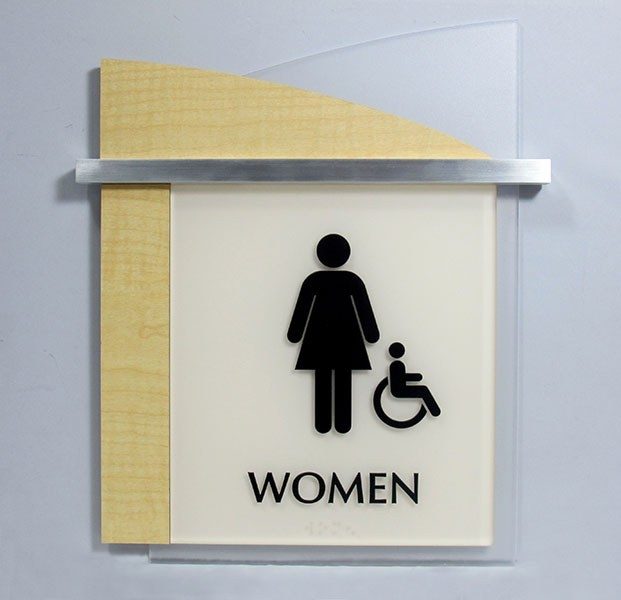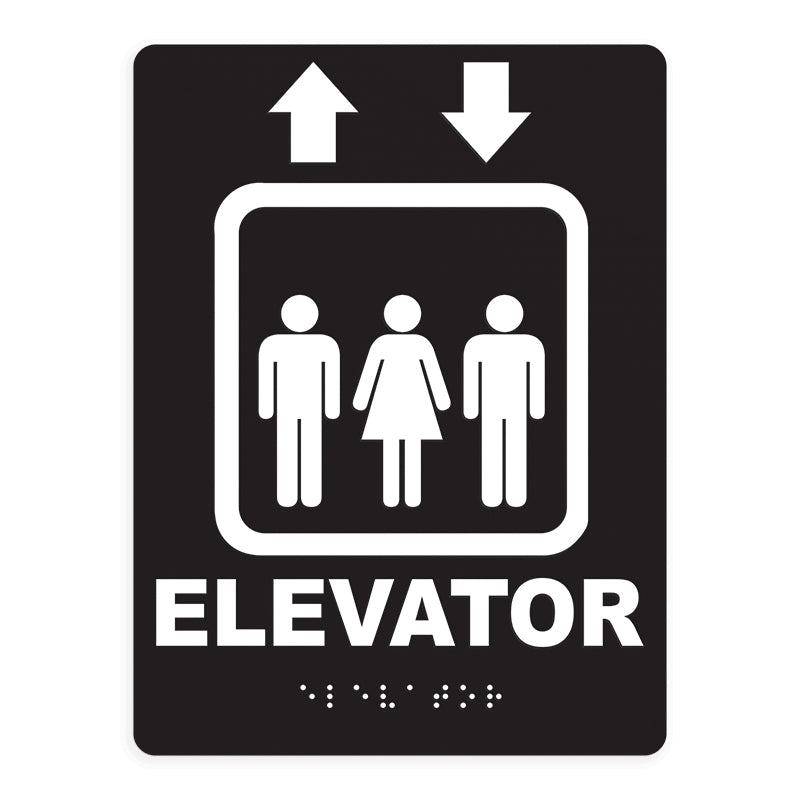Understanding the Regulations Behind ADA Signs
Understanding the Regulations Behind ADA Signs
Blog Article
Discovering the Secret Functions of ADA Signs for Enhanced Ease Of Access
In the realm of availability, ADA signs offer as silent yet effective allies, ensuring that rooms are comprehensive and navigable for people with disabilities. By integrating Braille and responsive elements, these indications damage barriers for the visually damaged, while high-contrast shade schemes and readable typefaces cater to diverse aesthetic demands.
Significance of ADA Conformity
Ensuring compliance with the Americans with Disabilities Act (ADA) is essential for cultivating inclusivity and equal gain access to in public rooms and offices. The ADA, enacted in 1990, mandates that all public facilities, companies, and transport solutions accommodate individuals with specials needs, guaranteeing they enjoy the same legal rights and chances as others. Conformity with ADA criteria not just fulfills legal obligations however likewise improves a company's credibility by demonstrating its commitment to diversity and inclusivity.
One of the crucial elements of ADA conformity is the execution of obtainable signs. ADA indicators are made to ensure that people with disabilities can easily browse via structures and rooms. These indications need to follow certain guidelines concerning size, font, color comparison, and positioning to assure exposure and readability for all. Appropriately carried out ADA signage aids get rid of barriers that people with disabilities often encounter, thereby advertising their freedom and confidence (ADA Signs).
In addition, sticking to ADA laws can reduce the threat of legal consequences and prospective fines. Organizations that fail to abide with ADA guidelines might face penalties or legal actions, which can be both destructive and financially burdensome to their public picture. Thus, ADA compliance is integral to promoting a fair atmosphere for every person.
Braille and Tactile Elements
The unification of Braille and tactile components into ADA signs personifies the principles of access and inclusivity. These features are critical for people who are blind or visually damaged, enabling them to browse public rooms with greater self-reliance and self-confidence. Braille, a tactile writing system, is necessary in giving written info in a layout that can be conveniently perceived with touch. It is commonly placed below the matching message on signs to ensure that individuals can access the info without aesthetic aid.
Tactile elements extend past Braille and consist of elevated personalities and signs. These parts are made to be noticeable by touch, enabling individuals to identify area numbers, toilets, leaves, and other vital areas. The ADA sets details standards relating to the size, spacing, and positioning of these responsive aspects to optimize readability and make certain uniformity across various settings.

High-Contrast Color Pattern
High-contrast shade plans play a pivotal duty in improving the visibility and readability of ADA signs for individuals with visual impairments. These plans are crucial as they make the most of the distinction in light reflectance between message and background, making certain that indications are conveniently discernible, also from a distance. The Americans with Disabilities Act (ADA) mandates making use of particular shade contrasts to accommodate those with minimal vision, making it a vital aspect of conformity.
The efficacy of high-contrast colors exists in their ability to attract attention in different lights conditions, consisting of dimly lit settings and areas with glow. Generally, dark text on a light history or light message on a dark background is utilized to attain optimal comparison. As an example, black text on a white or yellow background supplies a stark visual distinction that assists in quick recognition and understanding.

Legible Fonts and Text Dimension
When thinking about the style of ADA signs, the choice of clear font styles and proper message dimension can not be overemphasized. These straight from the source components are crucial for guaranteeing that signs come to people with aesthetic problems. The Americans with Disabilities Act (ADA) Recommended Reading mandates that typefaces have to be sans-serif and not italic, oblique, manuscript, very attractive, or of uncommon kind. These needs aid make sure that the message is quickly understandable from a distance and that the characters are distinguishable to varied target markets.
According to ADA standards, the minimum message elevation should be 5/8 inch, and it needs to enhance proportionally with viewing range. Consistency in message size contributes to a natural visual experience, assisting individuals in navigating settings effectively.
Moreover, spacing in between lines and letters is essential to legibility. Ample spacing avoids personalities from appearing crowded, improving readability. By sticking to these standards, developers can considerably boost ease of access, making certain that signage serves its desired purpose for all individuals, no matter of their visual abilities.
Reliable Placement Techniques
Strategic placement of ADA signage is important for optimizing availability and making sure compliance with legal standards. ADA standards state that indications ought to be mounted at an elevation in between 48 to 60 inches from the ground to ensure they are within the line of sight for both standing and seated individuals.
Furthermore, indicators must be placed beside the lock side of doors to permit simple identification before access. This placement helps people find rooms and rooms without blockage. In cases where there is no door, indicators must be situated on the local surrounding wall. Uniformity in indication placement throughout a center improves predictability, reducing complication and improving total individual experience.

Conclusion
ADA signs play an important function in promoting ease of access by integrating features that deal with the needs of individuals with disabilities. These elements jointly cultivate a comprehensive atmosphere, highlighting the significance of ADA compliance in ensuring equivalent accessibility for all.
In the world of ease of access, ADA signs offer as quiet yet powerful allies, guaranteeing that spaces are accessible and comprehensive for people with specials needs. The ADA, passed in 1990, mandates that all public facilities, companies, and transport services suit people with impairments, ensuring they take pleasure in the exact same rights and possibilities as others. ADA Signs. ADA indications are developed to ensure that people with impairments can conveniently browse through structures and areas. ADA guidelines state that signs need to be installed at an elevation between 48 to 60 inches from the ground to guarantee they are within the line of sight for both standing and seated people.ADA indications play a vital function in promoting access by integrating attributes that deal with the demands of individuals with impairments
Report this page